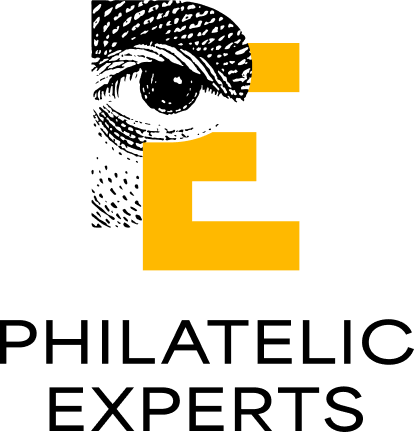EXPERTIZING TECHNOLOGY
Harnessing cutting-edge technology to demonstrate authenticity and assess quality
In today’s expertising world, high-quality magnifying glasses and high-magnification microscopes, as well as a suitable reference collection and well-developed reference library still form the basis of this exacting work. However, the emphasis is on “basis”. This is because state-of-the-art technology is also required – especially when it comes to the supreme discipline of expertizing – the condition/quality assessment of items and the expertizing of surcharges and overprints, genuine examples of which can often turn worthless mass-produced items into philatelic rarities.
The first step, however, is to examine the piece with regard to its plausibility. Has a genuine stamp been used correctly? Does the stamp, the overprint and/or the postmark match? In the case of covers/letters, does the franking match, or have any stamps been exchanged or improved? And generally in the case of high-quality items: Is the stamp or cover registered or even known to literature? And, broadly-speaking, particularly when it comes to high-quality, world rarities, is the stamp or cover recorded in specialist literature, or otherwise previously known to the philatelic community?

Microscopic examination with reflected and transmitted light
With a reflected light microscope, the light falls on the stamp from above. This allows stamps and overprints to be examined very well in terms of gloss, structure, and ink distribution. Ideally, impressions and perforations in the paper or in the gum are also visible. In relation to a genuine comparison piece, fake stamps or overprints may appear more watery or drier or even less contoured when enlarged accordingly. Colors may look duller or shinier, and the crimped edges may also differ in comparison to genuine examples.
A transmitted light microscope, on the other hand, illuminates the piece from below. This allows the pigment composition of stamps and overprints to be analyzed. Is the graininess correct? Are pure colors actually interspersed with pigments of other colors? Is the distribution of the various pigments correct for colored inks? All of these aspects must be considered by the diligent examiner.

Congruence check using a comparison macroscope
A comparison macroscope may also be used, for example, to check the optical congruence of the stamp or the imprint or overprint with a genuine piece. Both sectional images and overlays can be displayed. The two images are displayed in complementary colors (red/green) so that deviations are clearly visible. In contrast to regular image processing programs, the comparative macroscope is a court-approved procedure.

VSC 8000 – the pinnacle of forensic document examination
The same approach discussed above also applies to the “Video Spectral Comparator,” a market-leading device which can provide even further evidence to the examiner. Philatelic.Experts has exclusive use of the VSC 8000 owned by the philatelic auction house Heinrich Köhler.
This state-of-the-art system combines sophisticated digital image capture with multi-wavelength LED technology for the expertization of historical documents. The VSC 8000 is used by forensic examiners, government agencies, and immigration authorities worldwide, including, for example, by state criminal investigation departments.
The VSC 8000’s multispectral light sources, ranging from UV to the visible spectrum and infrared, also make details perceptible that are invisible to the human eye. Furthermore, the video spectral comparator also creates a reference file that enables pieces of the same type to be compared precisely by visually superimposing them.
The VSC 8000’s 3-D analysis is another informative expertizing option. The 3D software uses the photometric stereo method and involves capturing images using three different lighting angles. Topographical details of the surface are then revealed from the analysis of the three images. A kind of height map of the stamp is displayed in a 3D model image. This allows, for example, embossing on postage stamps to be compared in detail with the originals.

The Provenance Finder – a groundbreaking innovation in philately
The classic paper-based card index has a very long and successful tradition in philatelic expertizing. However, in 2023, digital transformation brought about a groundbreaking innovation in philately – ProFi, the “Provenance Finder” – an ever-growing digital philatelic archive developed by the auction house Heinrich Köhler under the leadership of its Managing Director, Tobias Huylmans.
As a result, Philatelic.Experts has unrestricted access to this unparalleled resource. Data available worldwide on individual philatelic lots from various sources was and is collected and compiled – for example, information from a wide range of international auction catalogs. This is how the unique web-based database was created. Artificial intelligence turns ProFi into a learning system that can create further links with each new entry.
More than 2 million entries have now been digitized, including, for example, over 100,000 index cards from the Köhler “Karteiregistratur” of the German States. With every query, the Philatelic Experts access the meticulously collected illustrations, descriptions, hammer prices and auction fees,, creating a broad-based historical record of worldwide stamps and covers.
With ProFi, the provenance and pedigree of high-quality postage stamps can be determined in a matter of seconds. At the same time, the rarity of a piece can be assessed in comparison to the number of recorded comparable stamps, covers with similar frankings, corresponding postmarks, or covers to or from the same origin or destination. Above all, however, potential alterations to the stamp or letter, such as restoration work, can be validly determined from the various illustrations and descriptions from over 100 years of philatelic literature.


